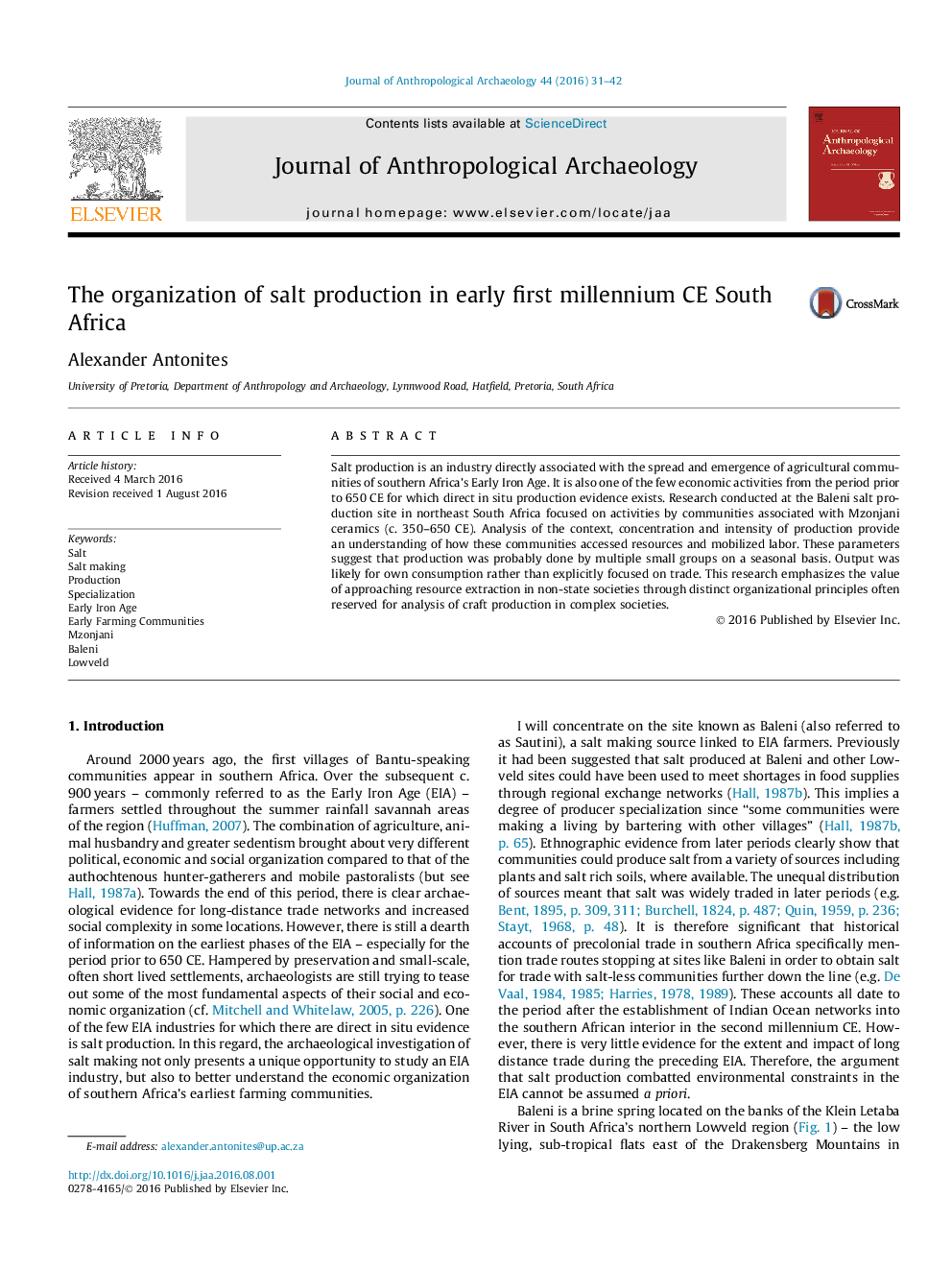| کد مقاله | کد نشریه | سال انتشار | مقاله انگلیسی | نسخه تمام متن |
|---|---|---|---|---|
| 1034840 | 1377869 | 2016 | 12 صفحه PDF | دانلود رایگان |
• Early Iron Age salt production was part of a semi-generalized subsistence strategy.
• Salt was probably harvested for own consumption with small surpluses for trade.
• Salt was produced by multiple, small groups of producers.
• Early Iron Age salt making was a part time and seasonal activity.
Salt production is an industry directly associated with the spread and emergence of agricultural communities of southern Africa’s Early Iron Age. It is also one of the few economic activities from the period prior to 650 CE for which direct in situ production evidence exists. Research conducted at the Baleni salt production site in northeast South Africa focused on activities by communities associated with Mzonjani ceramics (c. 350–650 CE). Analysis of the context, concentration and intensity of production provide an understanding of how these communities accessed resources and mobilized labor. These parameters suggest that production was probably done by multiple small groups on a seasonal basis. Output was likely for own consumption rather than explicitly focused on trade. This research emphasizes the value of approaching resource extraction in non-state societies through distinct organizational principles often reserved for analysis of craft production in complex societies.
Journal: Journal of Anthropological Archaeology - Volume 44, Part A, December 2016, Pages 31–42
